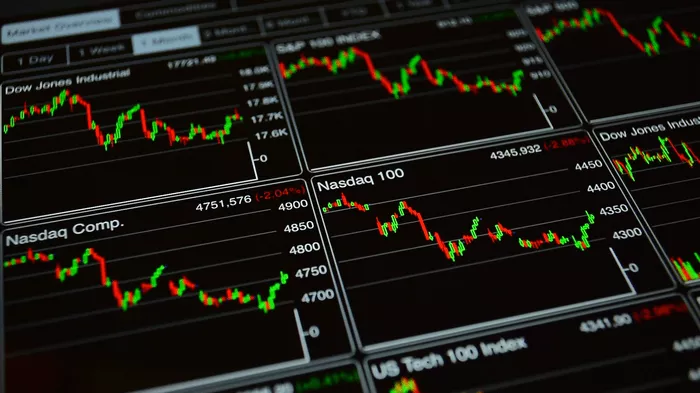In the world of investing, stock splits are significant events that can influence investor sentiment and stock prices. Amazon, one of the largest e-commerce companies globally, has seen its stock price soar over the years. This rise has led many investors to wonder about the possibility and timing of an Amazon stock split. This article explores what stock splits are, why companies choose to split their stocks, and when Amazon might consider splitting its shares.
Understanding Stock Splits
What Is a Stock Split?
A stock split occurs when a company divides its existing shares into multiple new shares. This action increases the total number of shares outstanding while decreasing the share price proportionally. For example, in a 2-for-1 stock split, shareholders receive two shares for every share they own, but the overall value remains the same. If a stock is trading at $1,000 before the split, it would trade at $500 after the split.
Why Do Companies Split Their Stocks?
Companies opt for stock splits for several reasons. One primary motivation is to make shares more affordable for average investors. A lower stock price can attract more investors who might be deterred by a high per-share price. Additionally, stock splits can enhance liquidity. More shares in circulation can lead to increased trading activity, which is beneficial for the company.
Amazon’s Stock History
Amazon’s Growth Trajectory
Amazon has experienced tremendous growth since its inception in 1994. Initially an online bookstore, it has expanded into various sectors, including cloud computing, streaming services, and artificial intelligence. This rapid growth has significantly impacted its stock price. As a result, investors have seen substantial returns over the years.
Previous Stock Splits
Historically, Amazon has split its stock three times. The first was in June 1998, with a 2-for-1 split. The second occurred in January 1999, also a 2-for-1 split. The most recent split took place in September 1999, where the company executed a 3-for-1 split. Since then, Amazon has not split its stock, making many investors curious about the likelihood of future splits.
Factors Influencing a Potential Split
Current Stock Price and Market Conditions
As of now, Amazon’s stock price is significantly higher than it was during its previous splits. A stock price exceeding $3,000 can be considered high for many retail investors. The company may choose to split its shares if it believes that a lower price would attract more investors. Market conditions also play a crucial role in this decision. If Amazon experiences a sustained increase in stock price, a split may become more likely.
Company Performance
The financial performance of a company can impact its decision to split its stock. Amazon has consistently reported strong earnings and revenue growth, indicating a healthy business model. If this trend continues, the company might feel more comfortable splitting its stock to maintain accessibility for investors. Strong financial performance can also lead to positive sentiment, encouraging the company to consider a split.
Competition and Industry Trends
Amazon operates in a highly competitive environment. Companies like Walmart and Alibaba are continuously vying for market share in e-commerce and cloud computing. A stock split could signal confidence to investors, showcasing Amazon’s commitment to maintaining its competitive edge. Additionally, if industry trends show that competitors are opting for stock splits, Amazon may consider doing the same to align with market expectations.
Potential Impact of a Stock Split
Investor Sentiment
A stock split can significantly impact investor sentiment. Generally, stock splits are perceived positively, as they suggest that a company is performing well and is confident in its future. This positive perception can lead to increased demand for the stock, potentially driving the price higher. However, it is important to note that a stock split does not change the underlying value of the company.
Trading Volume and Liquidity
Increased trading volume and liquidity are often associated with stock splits. As the share price decreases, more investors can afford to buy shares, leading to higher trading volumes. This increased activity can result in tighter bid-ask spreads, making it easier for investors to buy and sell shares. Enhanced liquidity is generally seen as a positive for investors, as it provides greater flexibility in trading.
Speculation and Market Expectations
Analyst Predictions
Many analysts closely monitor Amazon’s stock and speculate about the likelihood of a stock split. Some analysts believe that a split is inevitable, given the company’s growth trajectory and high stock price. Others argue that Amazon may not need to split its shares, as it has a strong reputation and solid investor base. Analyst predictions can influence investor behavior, often leading to increased buying activity ahead of a potential split.
Investor Sentiment and Expectations
Investor sentiment and expectations can also play a significant role in the timing of a stock split. If investors believe that a split is on the horizon, they may buy shares in anticipation, driving up the stock price. This increased demand can create a self-fulfilling prophecy, as more investors flock to the stock based on speculation. Companies often consider market sentiment when deciding on a stock split.
Conclusion
While Amazon has not announced any plans for a stock split, the potential for one remains. Factors such as the current stock price, company performance, and industry trends will likely influence the decision. Investors should stay informed about Amazon’s financial health and market conditions, as these elements will play a crucial role in any future stock split announcements.
In conclusion, stock splits can provide benefits to both companies and investors. They can enhance accessibility, attract new investors, and create positive sentiment in the market. As Amazon continues to evolve and grow, the possibility of a stock split could become more likely, but only time will tell when and if it will happen. For now, investors should remain vigilant, keeping an eye on Amazon’s performance and market trends as they navigate their investment decisions.
Related topics:


